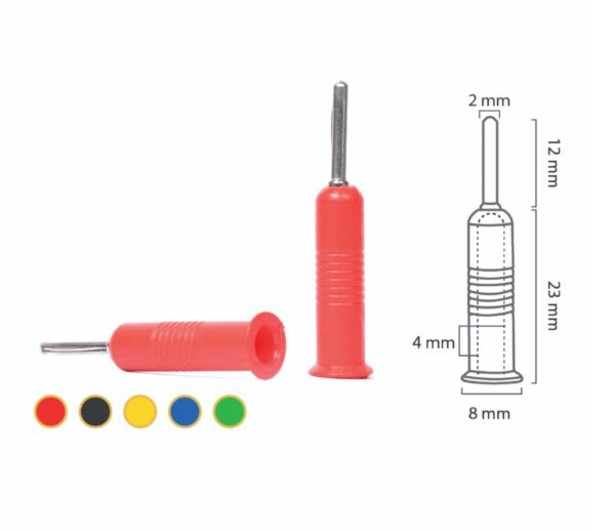Banana plug shorting bars are small, yet incredibly important components used in various electrical and electronic applications. Despite their simplicity, they play a crucial role in ensuring the safety and functionality of electrical circuits. Whether you’re a hobbyist, an electronics engineer, or just someone curious about electrical components, understanding banana plug shorting bar is essential.
What is a Banana Plug Shorting Bar?
A banana plug shorting bar is a device used to create a direct electrical connection between two or more terminals. It typically consists of a metal bar with banana plug connectors at each end. The banana plugs are designed to fit into banana jacks, which are standard connectors used in test equipment, audio devices, and various other electrical applications. The shorting bar itself can be made of various conductive materials, with copper and brass being common choices due to their excellent electrical conductivity.

Common Uses of Banana Plug Shorting Bars
Banana plug shorting bars are most commonly used in testing and measurement applications. Here are a few key uses:
Calibration: In laboratories, shorting bars are often used to calibrate equipment. By creating a short circuit between terminals, technicians can ensure that their instruments are reading accurately. This is particularly important in sensitive measurements where even small errors can lead to significant issues.
Signal Testing: In signal testing, a shorting bar can be used to ensure that there is no unwanted resistance in a circuit. This helps in verifying the integrity of connections and ensuring that the signal passes through the circuit without interference.
Safety Applications: Shorting bars are also used in safety applications, such as preventing accidental discharges in capacitors. By shorting the terminals of a capacitor, you can safely discharge it before handling, thereby reducing the risk of electric shock.
Audio Equipment: In the audio world, shorting bars are sometimes used to bridge connections in speakers or amplifiers, ensuring that the signal is properly routed and that no open circuits disrupt the audio quality.
Types of Banana Plug Shorting Bars
Banana plug shorting bars come in various designs, depending on the specific application. Some common types include:
Single-Bar Shorting: These shorting bars connect two terminals together and are the simplest type. They are often used in basic testing and calibration procedures.
Multi-Bar Shorting: For more complex applications, multi-bar shorting bars can connect multiple terminals. These are commonly used in more advanced equipment or in situations where multiple circuits need to be tested or calibrated simultaneously.
Adjustable Shorting Bars: Some shorting bars are adjustable, allowing the user to change the distance between the banana plugs. This feature is particularly useful when dealing with non-standard spacing between terminals.
Choosing the Right Shorting Bar
When selecting a banana plug shorting bar, it’s important to consider the material, the type of connection needed, and the environment in which it will be used. For most applications, a standard copper or brass shorting bar will suffice, but in environments with high levels of corrosion, a gold-plated bar might be preferable. Additionally, ensure that the shorting bar fits securely into the banana jacks to avoid any loose connections that could lead to inaccurate readings or unsafe conditions.
Conclusion
Banana plug shorting bars may seem like simple devices, but they are indispensable in many electrical and electronic applications. Whether you’re calibrating sensitive equipment, testing signals, or ensuring the safety of your work environment, a reliable shorting bar is essential. By understanding the different types and their uses, you can select the right shorting bar for your specific needs, ensuring that your circuits remain safe and functional.










Write a comment ...